For as long as human beings have been able to mould piles of clay and dirt into cubic rectangles and stack them upon one another to create the most marvelous of engineering feats, there has existed that small reptilian part of our brains that has longed for nothing more than wreaking absolute devastation upon those structures. The act of breaking bricks in a variety of shapes and colours is something that will always be inherently entertaining to humans.
We could speculate for hours on why that is, possibly highlighting a sort of God Complex in ourselves that enjoys the ability to both create and destroy but the more likely explanation is that it’s just a damn good time. Nowadays, we’ve been spoiled by physics engines and realistic environments that do a remarkably sound job of simulating our deepest fantasies of desolation but before all that confounded technology made things easier we had to rely on simple brick-breaker games to do the job. It’s within that realm that Drawkanoid establishes itself, a throwback to a time when bouncing a ball against a crumbling wall was enough to satisfy. It just happens to do that with some of that “confounded technology” to deliver an experience that feels both familiar and excitingly fresh at the same time.
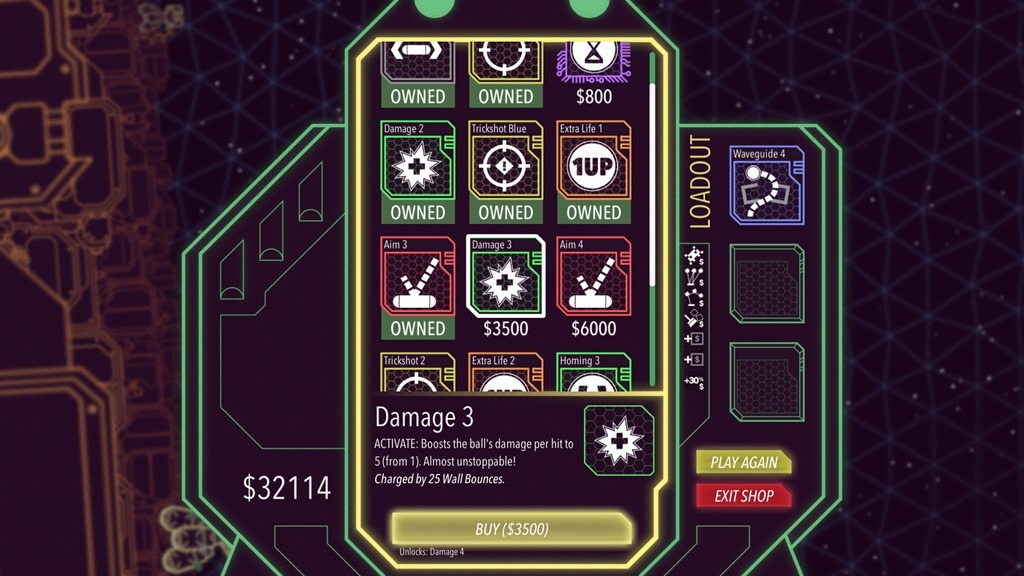
If you’ve ever played a game that involved the repeated bouncing of a ball against a paddle then you’ll no doubt be familiar with the core gameplay of Drawkanoid. A field of multi-coloured bricks, certain necessary targets and a danger zone at the bottom of the screen that must be avoided at all times. It’s a tried and tested formula that bakes a treat we’ve all enjoyed, but Drawkanoid adds a few extra ingredients that result in a cake that’s delicious.
Your paddle isn’t a line, nor is it stuck on a single plain of an axis but can rather be drawn into whatever position necessary – which on its own sounds like enough to break the game. The ability to determine shots with more pinpoint accuracy should render Drawkanoid a push-over which would be true if the ball wasn’t moving faster than the human eye can track. I tested it, the only living creatures able to keep up with the pace of the ball in Drawkanoid are Baboon Spiders and that’s only because they have four times the number of eyes we have. To help our pathetic human vision, developer QCF Design has the ball enter a “bullet time-esque” slow down when it crosses into your side of the field, allowing you some time to play it back effectively.
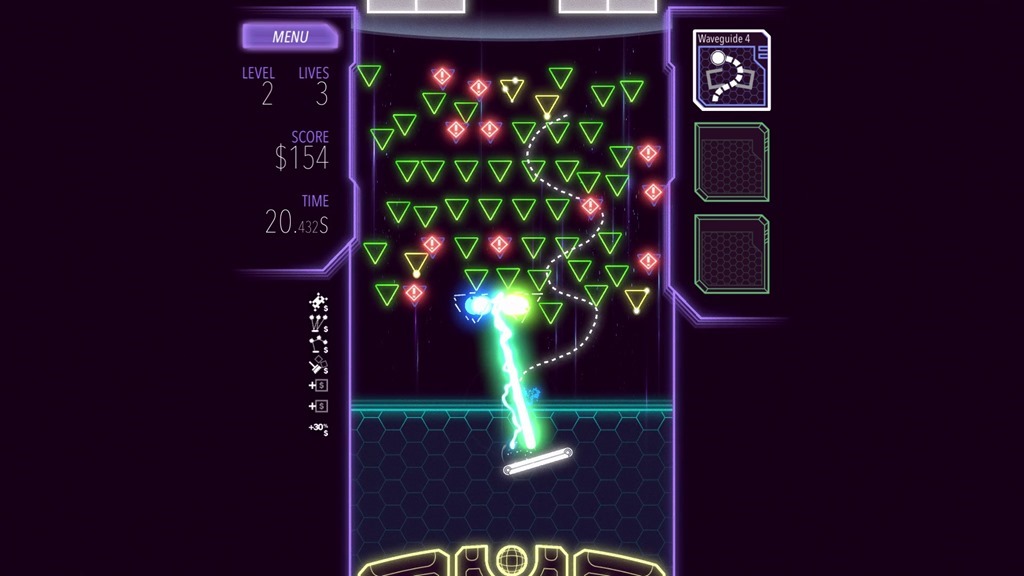
What this results in is a satisfying and chaotic explosion of neon colours and thumping chip-tune music as you bounce around arenas that are constantly changing, switching from solid brick walls to Bullet Hell-like stages that are just mad to keep up with. While the core mechanics are simple enough to learn, the faster the game becomes, the more difficult it can be to maintain a sense of flow.
It can grow into an interesting challenge while never demanding too much. With a series of unlockable upgrades and boosts which can be purchased with earnable currency, Drawkanoid is a fantastic “podcast game”, as I like to call them. The sort of game easily playable while watching a movie or listening to an audiobook; engaging enough to give you something to do while relaxing but never becoming a strain on your mental resources. It’s a chill time despite how frantic it can become.
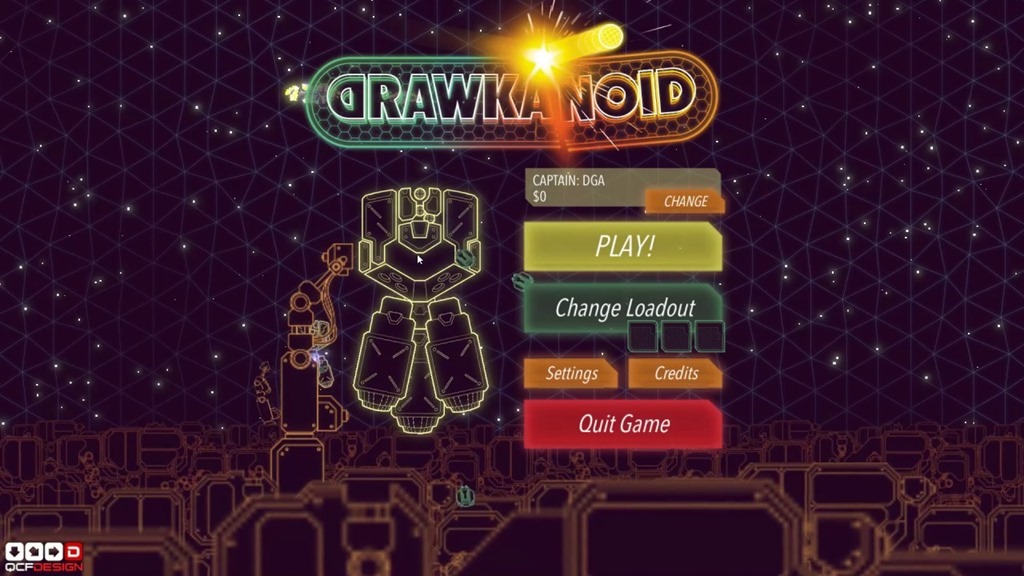
The only drawback is a reluctance to really experiment and play within itself. The core mechanics are enjoyable, but I feel like there was space to expand upon them even further. The most exciting stages you’ll experience in the game are the aforementioned Bullet Hell levels because of the added layer of complexity thrown into the mix. Yet when they leave the party and the usual huddle of stationary blocks barge back into the room uninvited, it really makes you long for the life and soul of the party to return.
Beyond that, the dynamic interactions available between the ball and a drawable paddle could lead to some really interesting level designs that are constantly hindered by the same space being utilised for every stage. Scrolling levels, Space Invader Style challenges, even just a range of field shapes could have added all sorts of extra flavour to a core loop that feels intelligently designed but sadly under-explored.
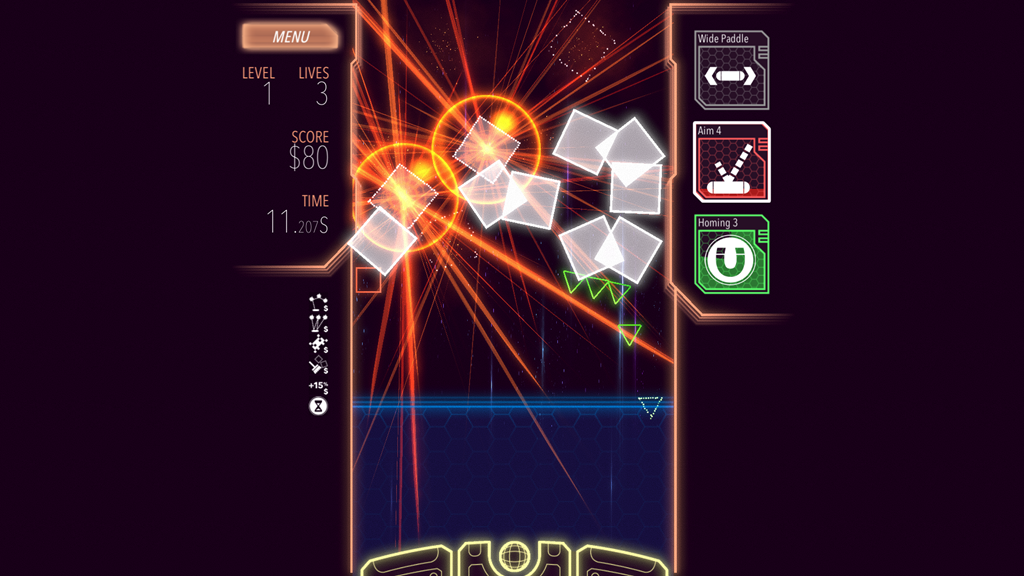
It would also be dishonest if I didn’t mention my own disdain for the game’s music. While definitely the most subjective part of any game review, the chip-tune soundtrack just grated on me the longer I listened to it. Perhaps that’s more my personal distaste for that certain genre of music, but I think it went beyond that.
I couldn’t tell you if there are individual songs in Drawkanoid because it didn’t take long for them to all blend together into an unrecognisable cacophony. It’s the symptom of a game that doesn’t segment itself into levels but strives for a continuous mode of play, but even knowing that didn’t stop me from turning it off and replacing the game’s tunes with a playlist of my own or a very good documentary. See the “podcast game” comment for clarity.
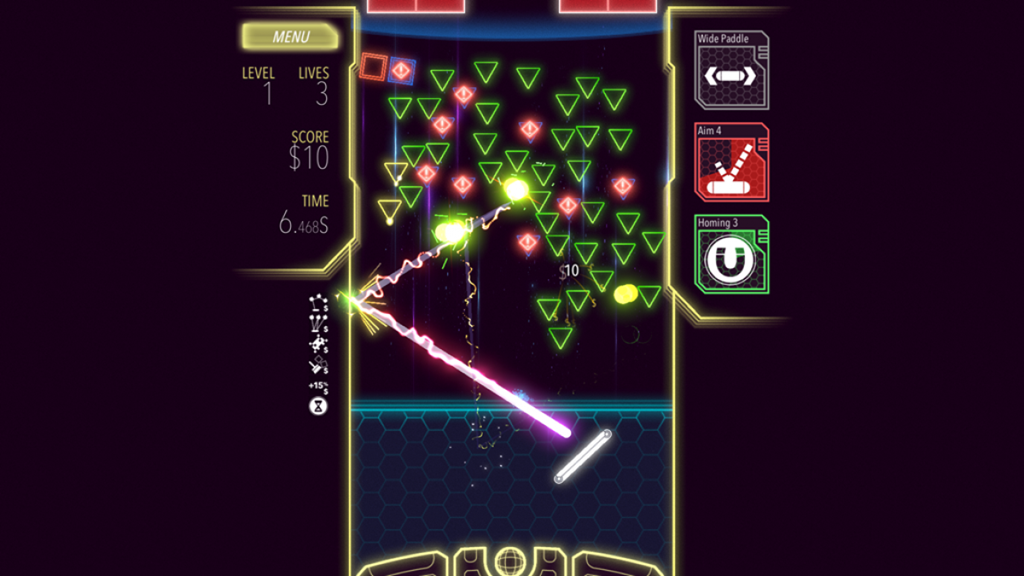
Despite these frustrating limitations Drawkanoid still has a lot to offer. A Countdown mode raises the frantic speed of the game even further while Zen mode lets you turn off your brain and just watch the pretty colours explode and pop out of existence. There’s a library of upgrades bigger than I expected to add an element beyond simply striving for high scores. There’s a surprising amount of depth and skill with Drawkanoid that’s not only cathartic but oddly addictive because of the sheer speed of it all.
I can’t remember who said it but I recall a comment that Drawkanoid was an excellent coffee-break game and that’s something that holds up as profoundly true. I just wish it could have been a little bit more than that but is instead held back by a series of limitations that make it a touch repetitive.
Last Updated: January 28, 2020
| Drawkanoid | |
|
Drawkanoid is a unique, creative exploration of brick-breaker games and the mechanics that drive them. It delivers a solidly enjoyable experience but is unfortunately limited in its scope.
|
|
|---|---|
| Drawkanoid was reviewed on PC | |
|
0 /
100
| |





















Craig "Crios" Boonzaier
January 29, 2020 at 11:08
I would like this on Android, but will probably get it on Steam. Been looking forward to a new Arkanoid style game.